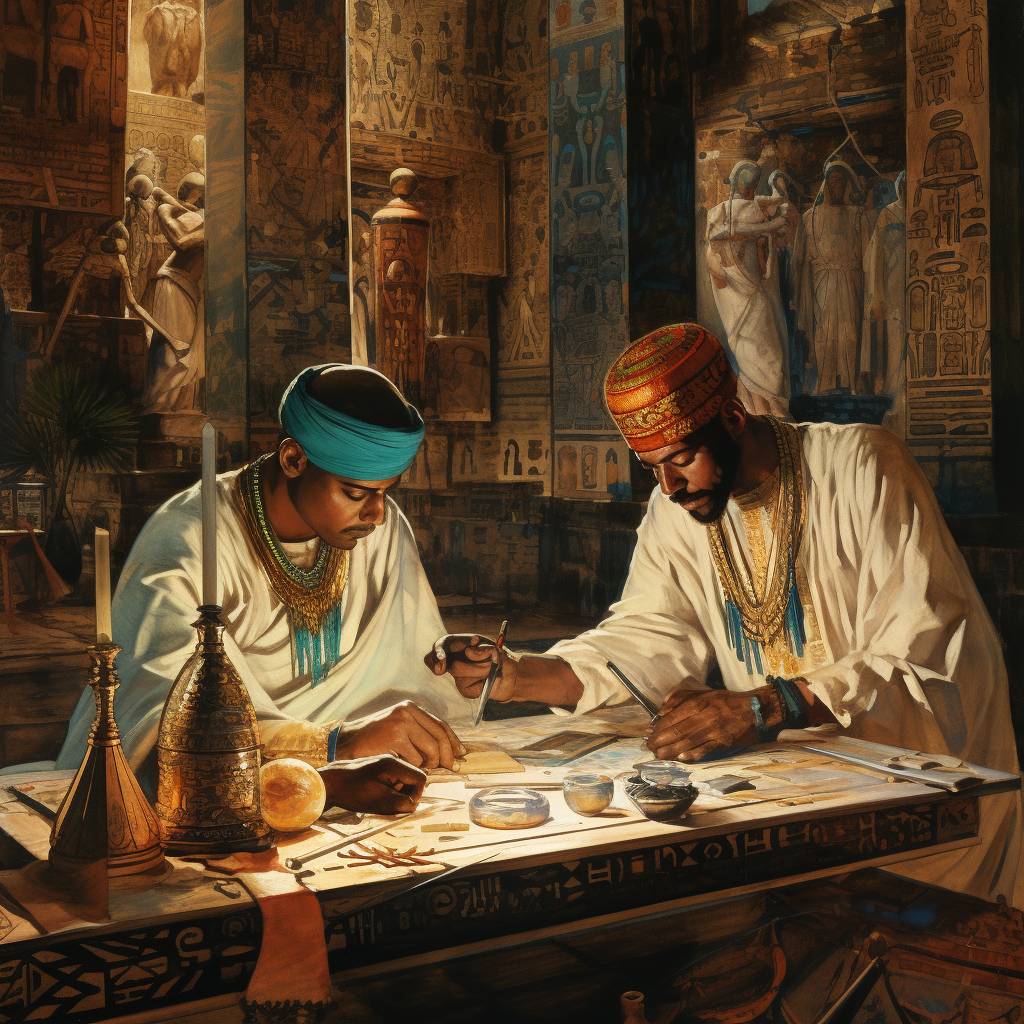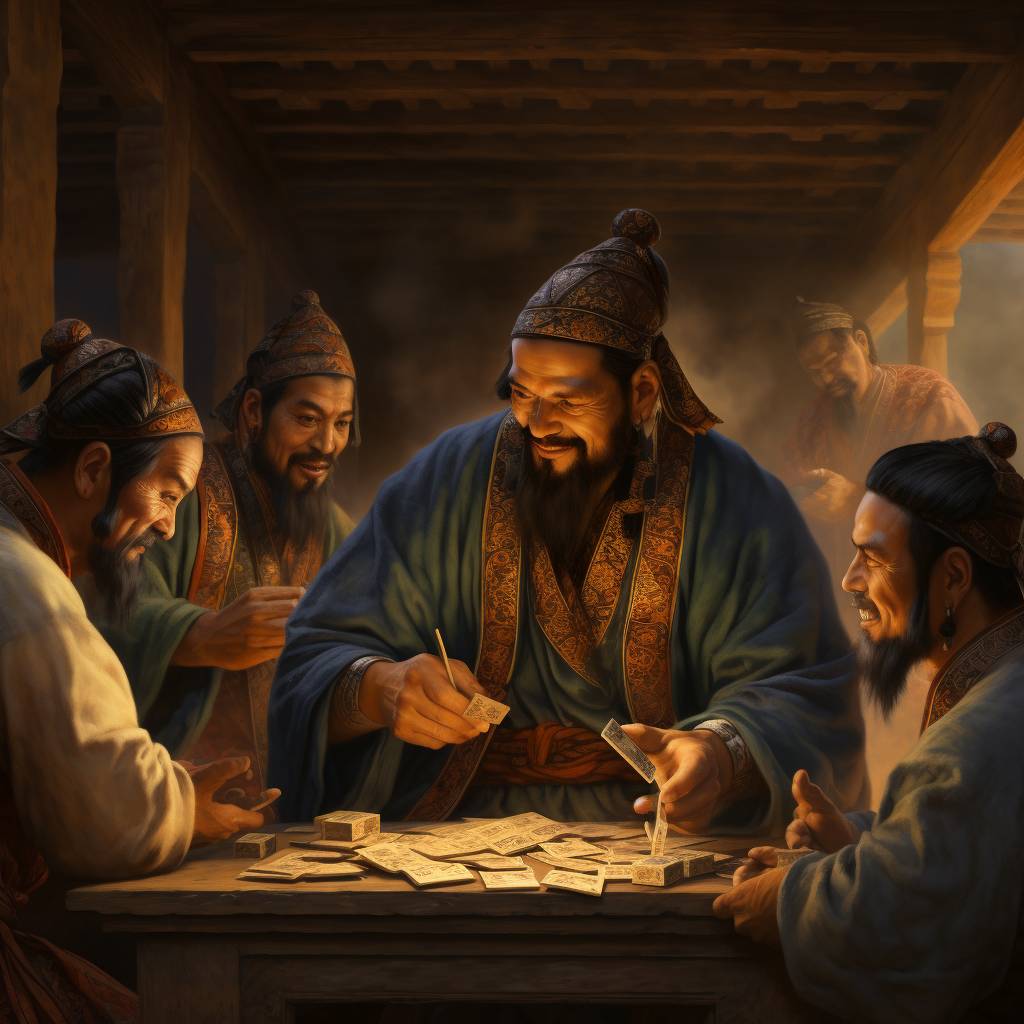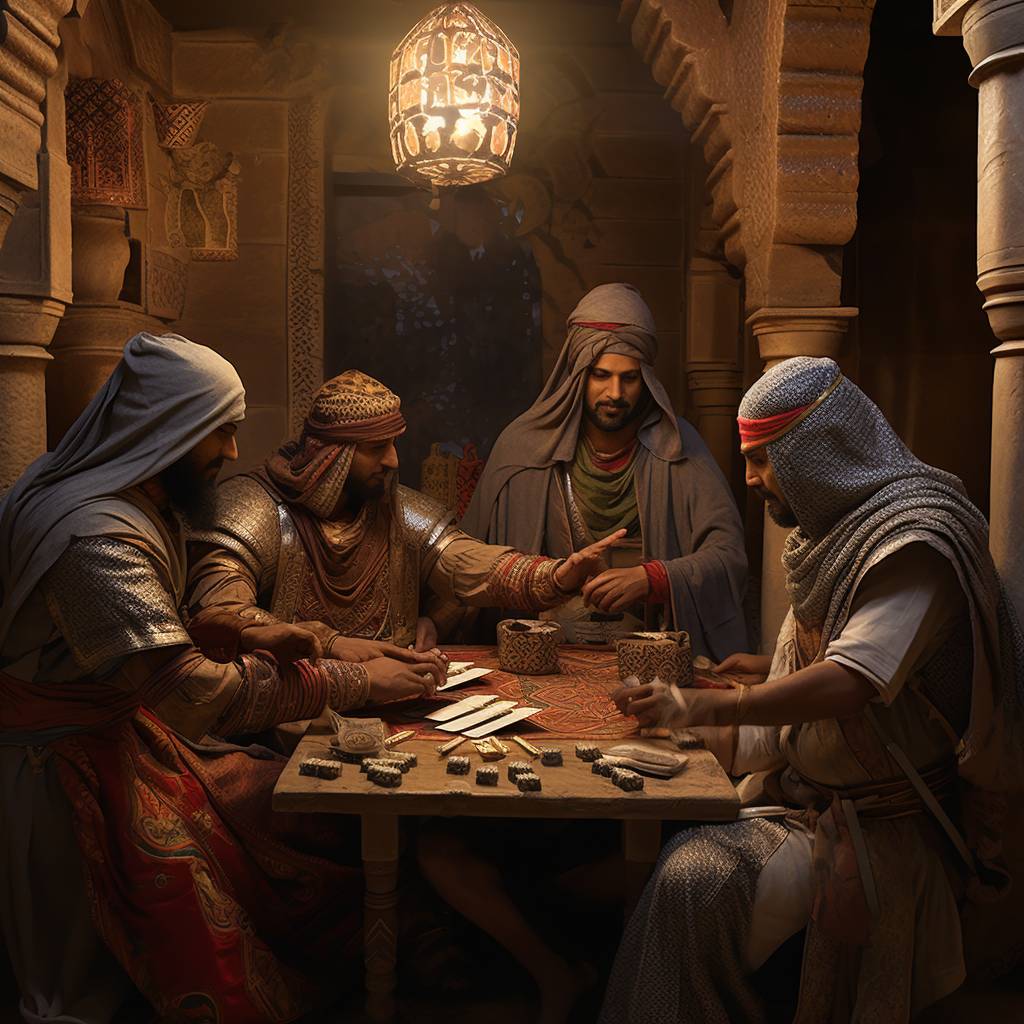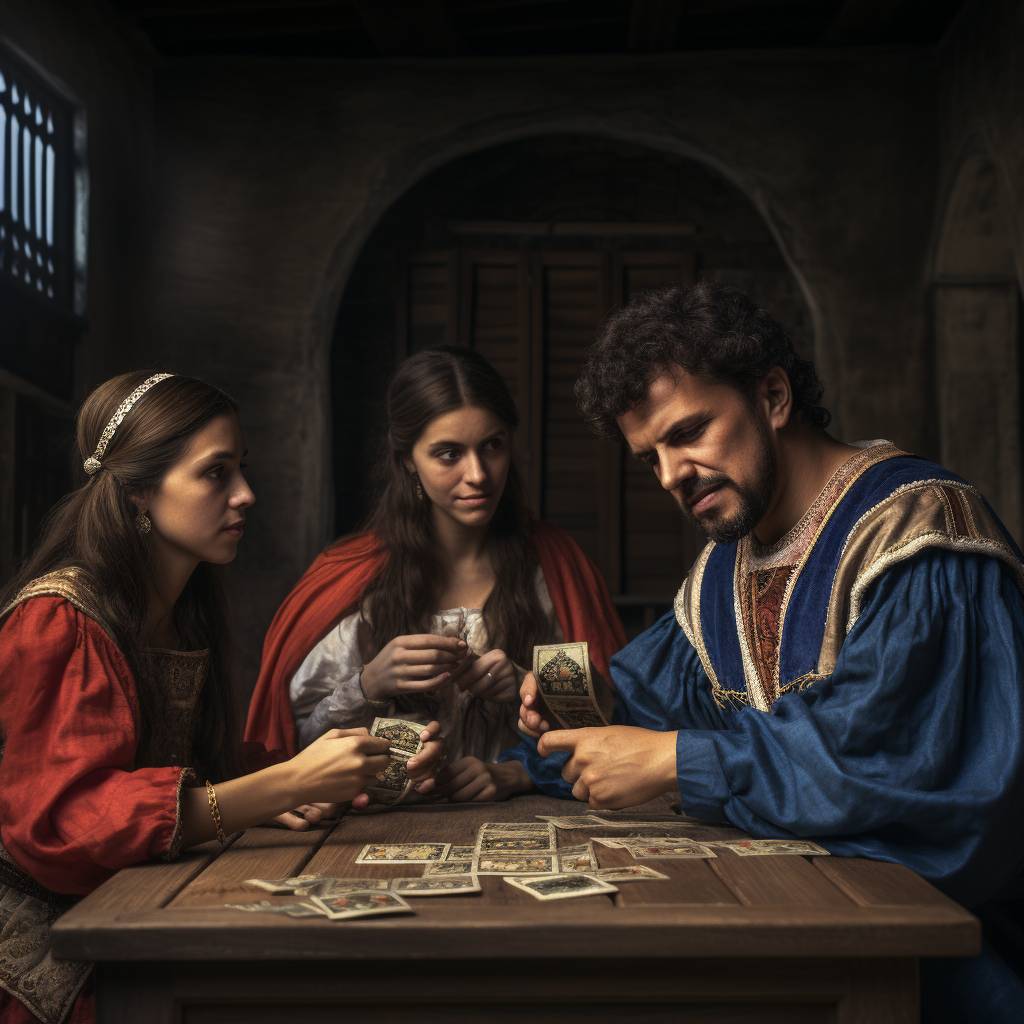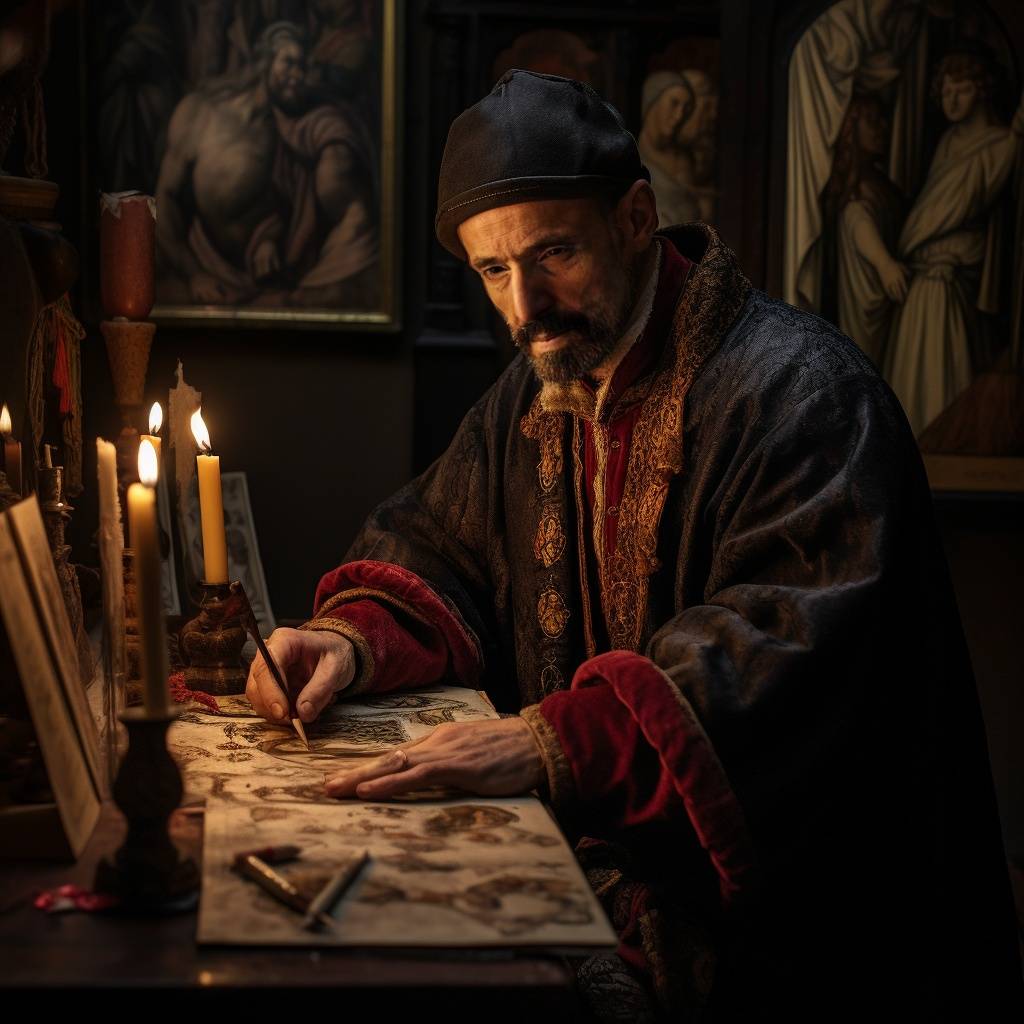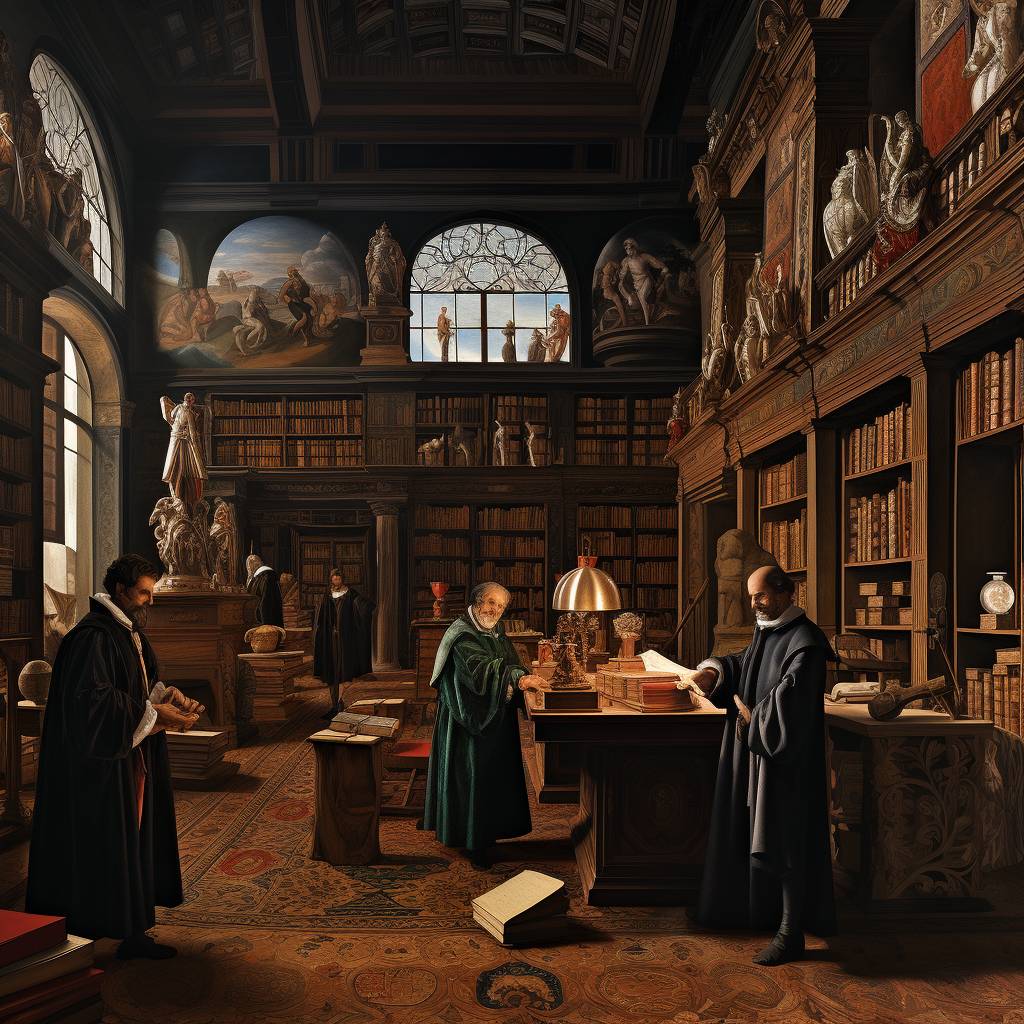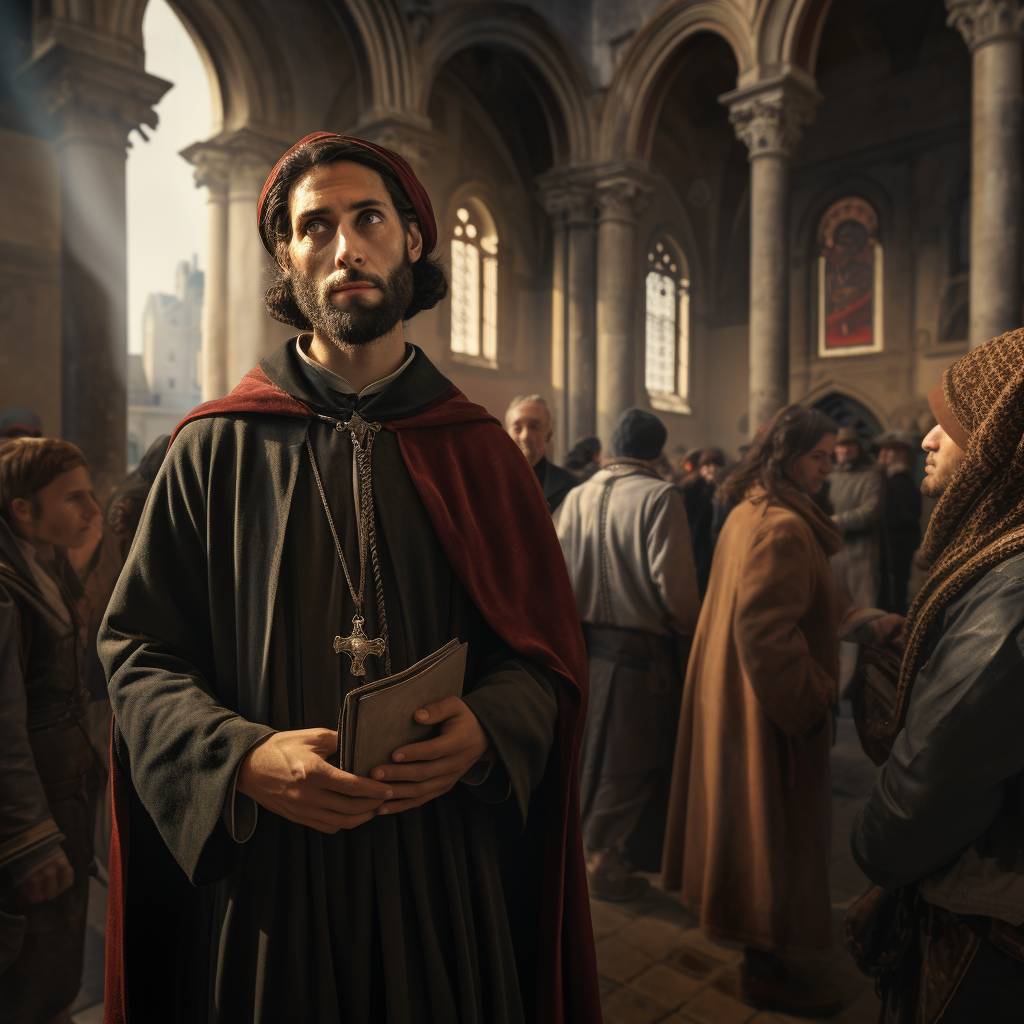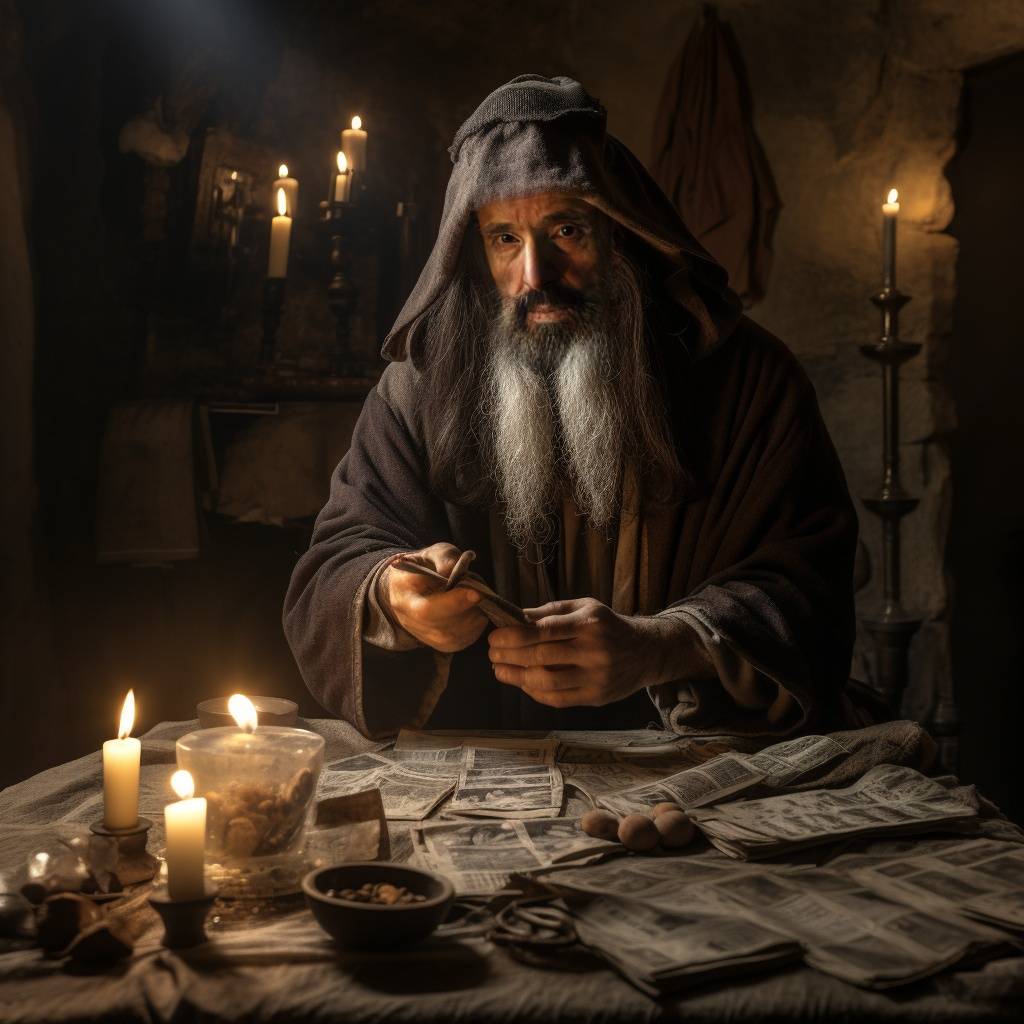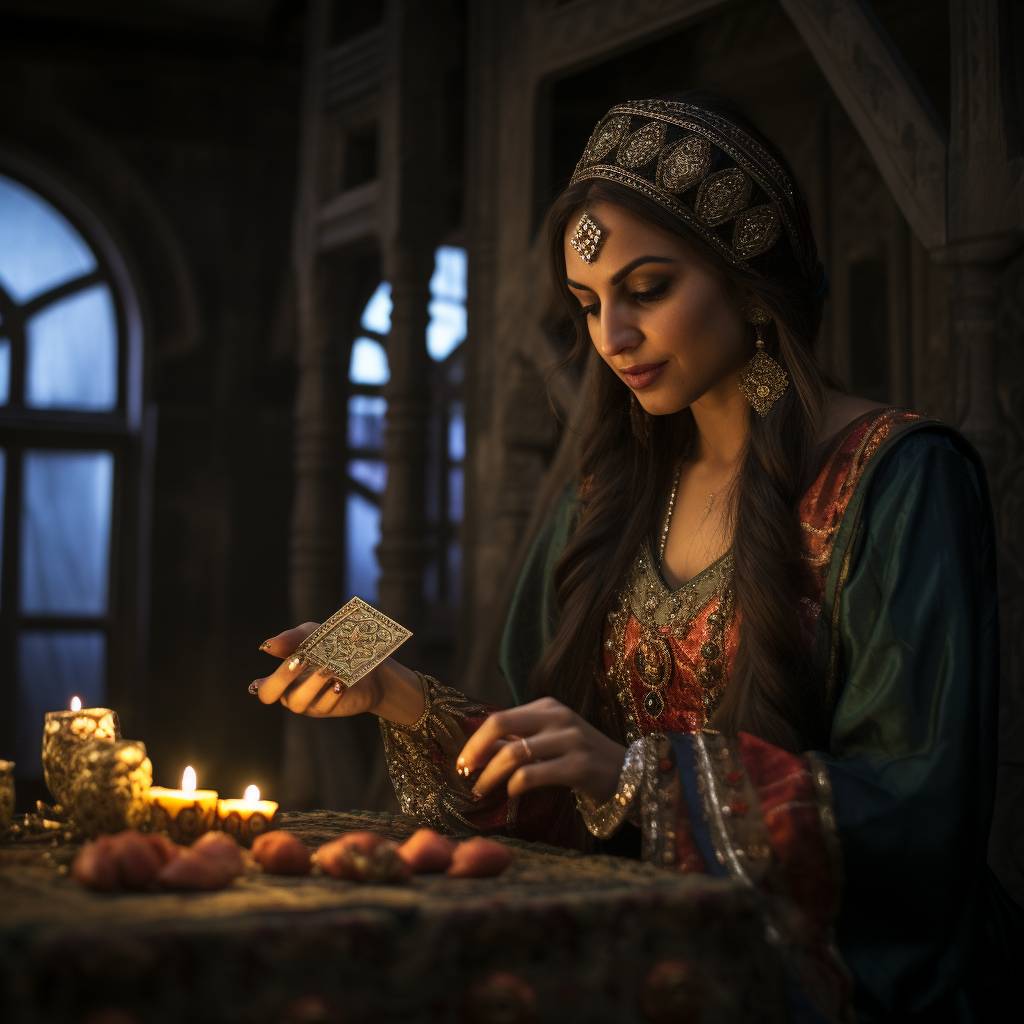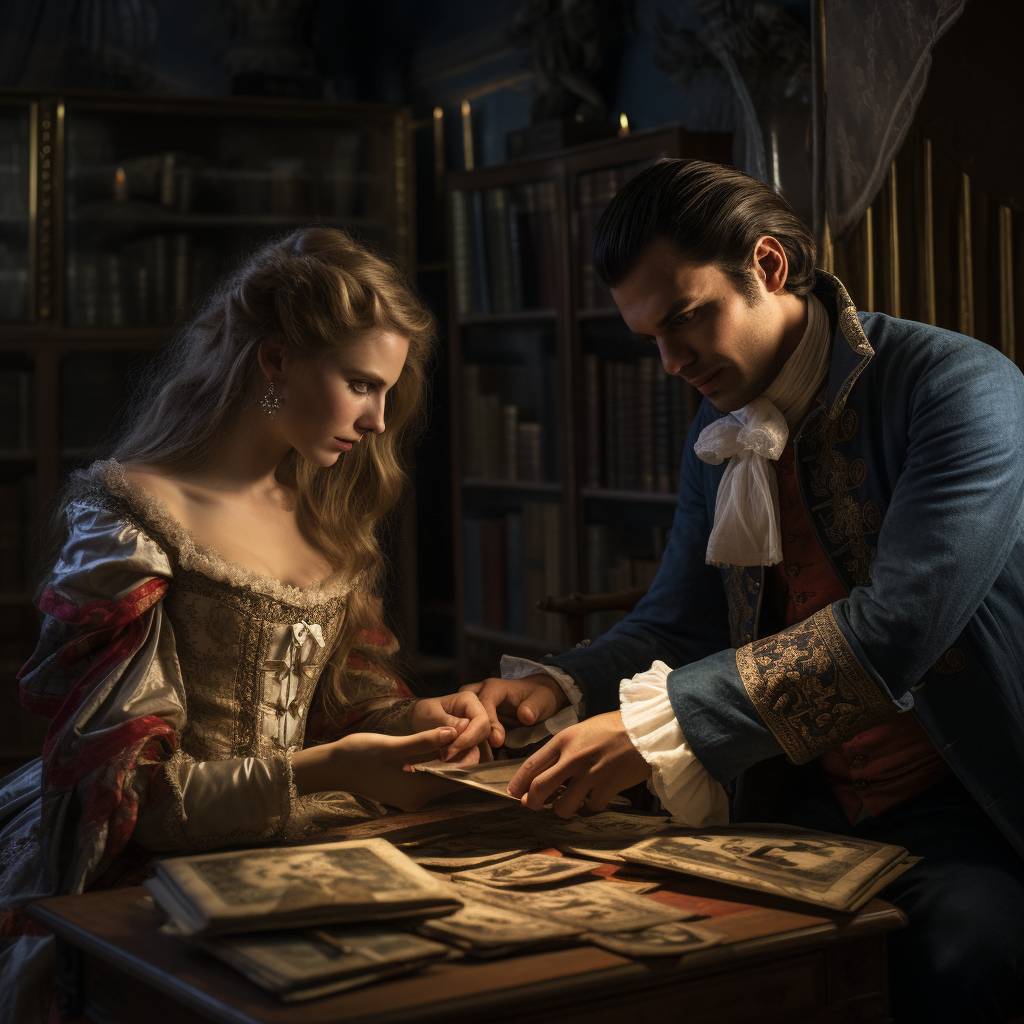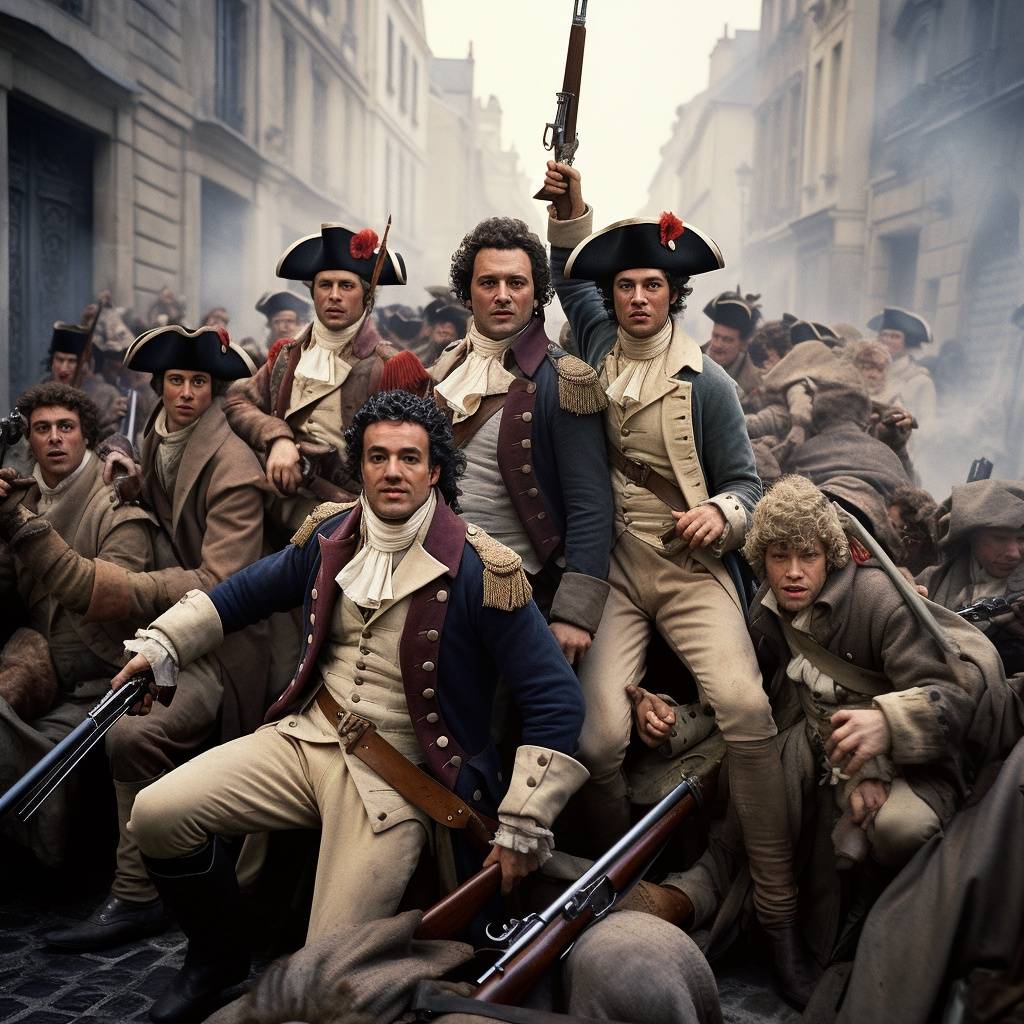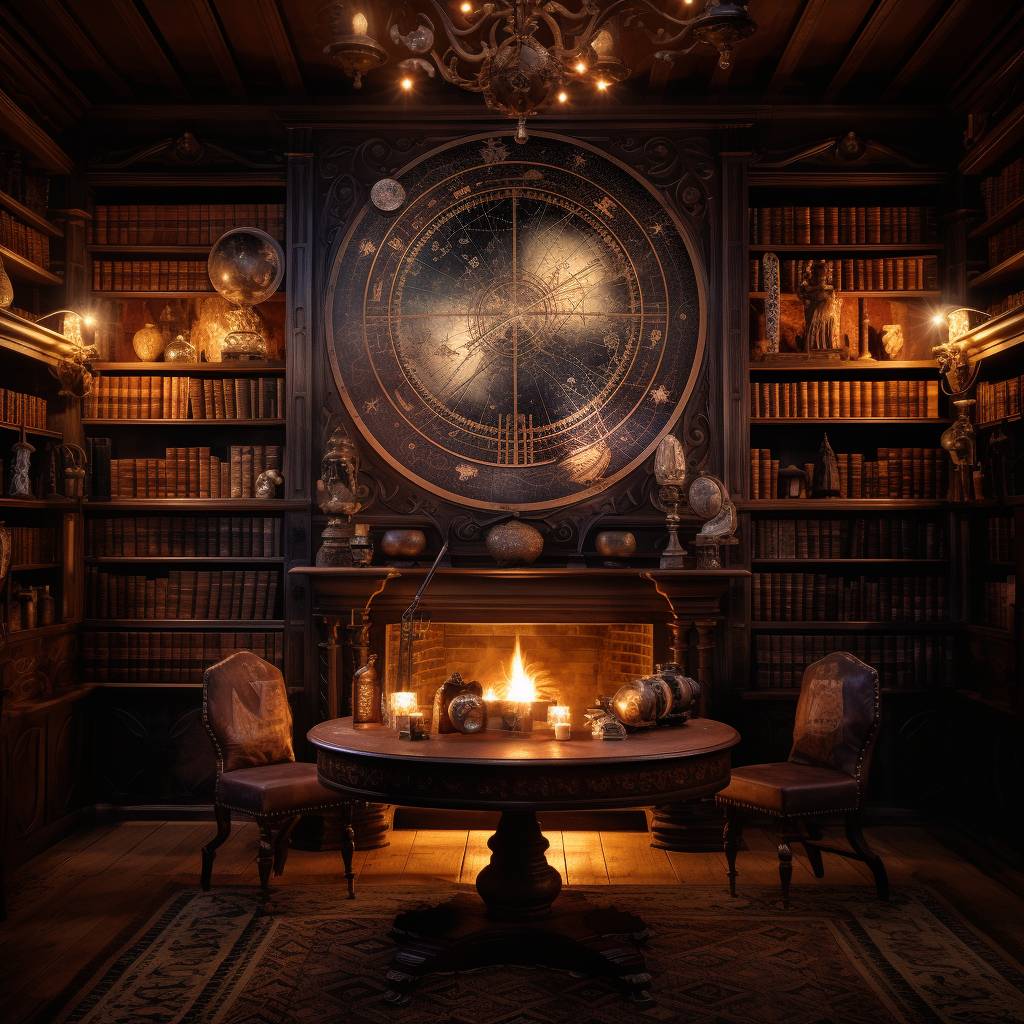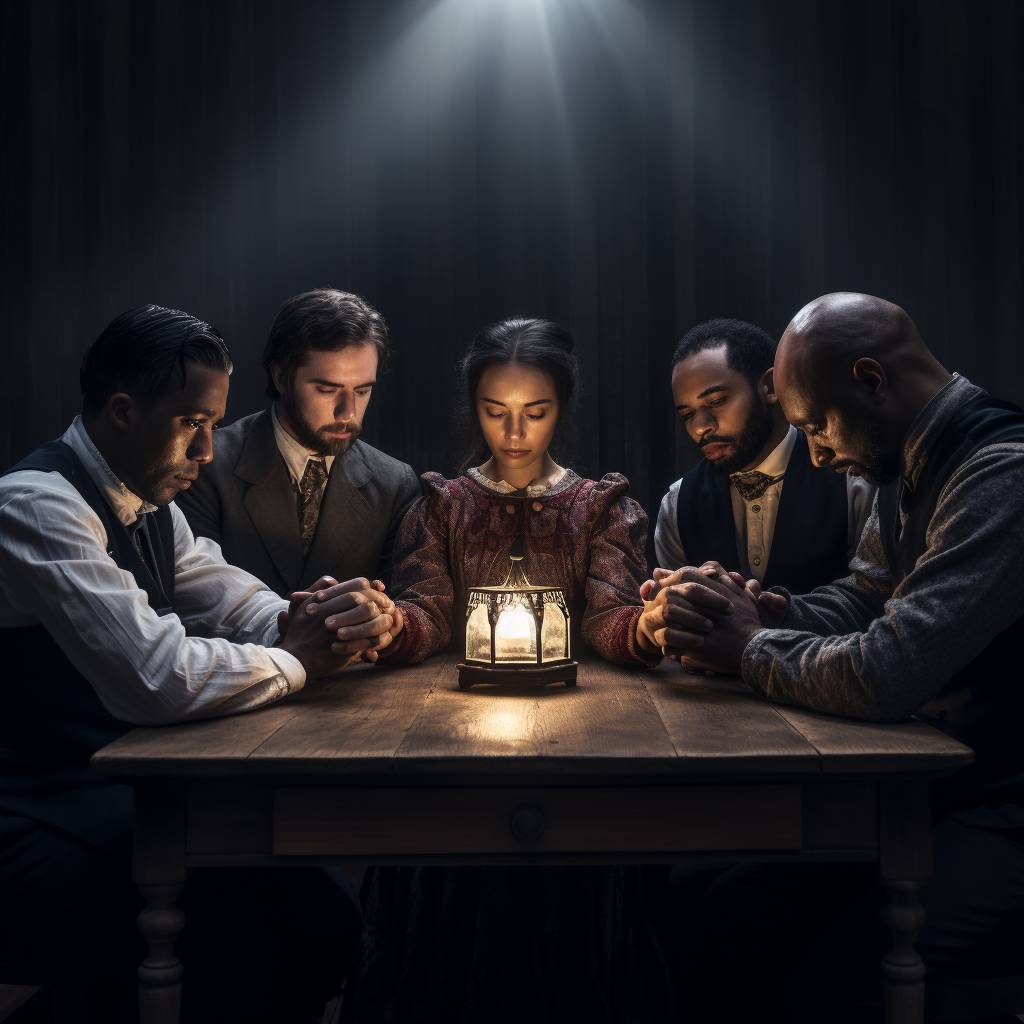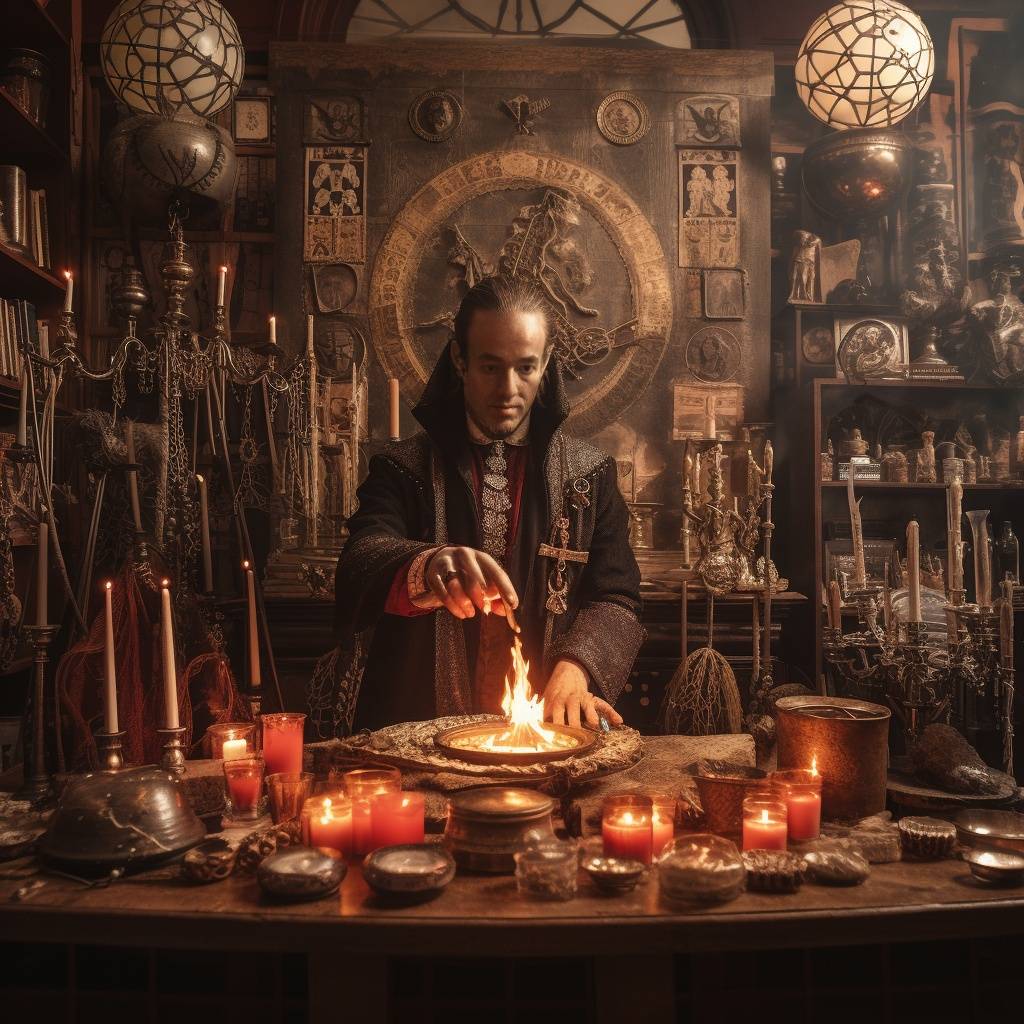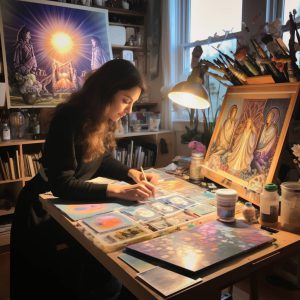The History of Tarot Cards
From the esoteric corridors of Egypt to the ornate courts of the Renaissance, the history of tarot cards is a labyrinth of stories, myths, and interpretations. Embark with us on a journey through the ages, as we unravel the tapestry of history and myth that has woven the tarot into the intricate fabric of our collective consciousness
Ancient Egyptian Lore
The deep-rooted association between tarot cards and ancient Egypt primarily revolves around the Book of Thoth. Thoth, an Egyptian deity symbolizing wisdom and the scribal arts, was believed to have penned this ancient text, which contained vast divine knowledge spanning various disciplines. Some esoteric thinkers from the 18th and 19th centuries theorized that to preserve this knowledge, Egyptian priests translated the book’s wisdom into the symbolic imagery of tarot cards, with each card encapsulating a chapter or fragment of ancient insight.
The 22 Major Arcana cards of the tarot are particularly believed to correspond with specific Egyptian hieroglyphs and symbols, representing core teachings from the Book of Thoth. This association is further strengthened by the Hermetic tradition, which ties together the principles of Greek god Hermes and Thoth, emphasizing the interconnectedness of the universe, a principle many believe to be mirrored in tarot symbolism.
However, it’s vital to approach this theory with caution. Despite its allure, there’s no concrete archaeological evidence linking tarot cards to ancient Egypt.
Asian Origin of Playing Cards
The theory surrounding the Asian origins of tarot cards is both compelling and historically grounded. The roots of playing cards can be traced back to ancient Asia, specifically 9th century China during the Tang Dynasty. These early cards, fashioned from materials like wood, bone, and paper, showcased a variety of designs and motifs that hinted at the social and philosophical nuances of the era.
As trade routes flourished, there’s speculation that these ancient card games and their associated traditions migrated to other regions. From China, the cards traveled to India, where they were absorbed into local gaming and divinatory traditions. From India, they made their way to Persia. The Persians, known for their intricate card games, further adapted these cards, introducing them to the Islamic world and subsequently to the Mediterranean regions through trade and conquest.
The journey of these cards, as they traversed vast geographies, reflects more than just the movement of a game. It’s emblematic of cultural exchanges, the melding of philosophies, and the fusion of artistic expressions.
The Mamluks and Islamic Influence
The Mamluks, a military caste that held power in Egypt and Syria from the 12th to the 16th centuries, have an intriguing connection to the evolution of playing cards and, potentially, to the tarot. Their playing cards, which have been well-documented, bore distinct designs and symbols that drew from their culture and military life. These cards displayed suits like swords, cups, coins, and polo-sticks, each suit containing ten numbered cards and three court cards, strikingly mirroring the structure of modern tarot and playing card decks.
The significant resemblance between Mamluk card suits and the traditional suits of European cards cannot be overlooked. While polo, represented by the polo-sticks, was an unfamiliar sport to Europeans, its translation into batons or wands in European decks shows a direct influence. Furthermore, the very concept of court cards in the tarot, with its kings, queens, knights, and pages, might have been inspired by the Mamluk’s depiction of seated kings and deputy figures in their decks.
The Islamic world was a hub of art, science, and philosophy during the Middle Ages. As merchants, travelers, and crusaders moved between the East and the West, they likely carried these cards with them, acting as cultural conduits. As these cards migrated to Europe and got assimilated, they may have paved the way for the emergence of early European tarot.
The Journey of Tarot into Italy
Italy holds a distinguished position in the history of tarot cards. The earliest references to playing cards in Europe come from Italy around the mid-14th century. These weren’t the tarot cards we recognize today but were rather basic sets used primarily for gaming. It’s believed that these cards made their way into Italy via trade routes connecting the region with the Islamic world.
The late 14th century marked a period of cultural and intellectual rebirth in Italy, known as the Renaissance. This era brought about a resurgence of interest in classical art, literature, and philosophy, as well as a greater focus on individual creativity and innovation. This cultural shift paved the way for new modes of expression, and the emergence of the tarot as a distinct form of playing cards reflects the broader changes taking place.
By the early 15th century, a specific variant of these playing cards began to gain popularity in northern Italian regions like Milan, Ferrara, and Bologna. Known as “carte da trionfi” or “triumph cards”, they were the precursors to the modern tarot deck. These cards included an additional set of pictorial cards, which would evolve into what we know today as the Major Arcana. Initially, the trionfi were used for gaming, with the added cards serving a function similar to the trump cards in modern card games.
The Italian Renaissance and Tarot
One of the most striking features of the tarot is its use of artistic imagery. As the Italian Renaissance saw a revival of classical art and new developments in artistic techniques, it is likely that artists were attracted to the tarot as a new medium for expression. The tarot decks commissioned by wealthy Italian families, such as the Visconti-Sforza deck, showcase the intricate artistry of the time.
The Italian Renaissance was characterized by a renewed interest in symbolism, allegory, and classical mythology. The tarot, with its Major Arcana featuring allegorical figures such as The Empress, The Fool, and The Lovers, reflects this trend. It is likely that the tarot’s symbolic images resonated with the intellectual climate of the time.
The Renaissance placed a strong emphasis on individual creativity and self-expression. The tarot, with its diverse and imaginative imagery, offered a new medium for artists to showcase their unique vision. This individualistic spirit aligns with the ethos of the Renaissance.
The Renaissance saw the rise of humanism, a philosophy that emphasized the value and agency of individuals. The tarot, with its use in divination and self-reflection, mirrors this focus on personal exploration and understanding.
The Fall of Byzantium and the Rebirth of Ancient Wisdom
The fall of the Byzantine Empire in 1453 to the Ottoman Turks had far-reaching effects. As many citizens of Byzantium fled to Italy, they brought with them documents that had been lost to Western Europe for over a thousand years. Among these documents were the writings of the Corpus Hermeticum, an influential collection of philosophical and theological texts attributed to Hermes Trismegistus, a figure associated with both the Greek god Hermes and the Egyptian god Thoth.
The arrival of the Corpus Hermeticum in Italy coincided with the early stages of the Italian Renaissance. Marsilio Ficino, a prominent Italian scholar and priest, was commissioned by the Florentine patron of the arts, Cosimo de’ Medici, to translate the Corpus Hermeticum into Latin. This translation made the ancient wisdom contained within the texts accessible to the scholars and intellectuals of the time.
The translated works had a profound impact on Italy, as they presented a new philosophical perspective that harmonized elements of Greek, Egyptian, and Christian thought. The Hermetic texts, with their emphasis on spiritual rebirth, the interconnectedness of the cosmos, and the divine origins of human beings, resonated deeply with the Renaissance thinkers who were seeking to reconcile classical wisdom with Christian theology.
Tarot Cards: A Subversive Medium of Expression
There was opposition to the Renaissance from the Roman Catholic Church, which perceived the revival of ancient Greek and Egyptian ideas as a threat to the established religious orthodoxy. The church exercised considerable influence and had the power to censor or suppress works that were deemed heretical or contrary to the teachings of Christianity.
In this climate of religious tension and potential persecution, some individuals sought alternative means of expressing their ideas. Tarot cards emerged as a medium that could serve this purpose, as they were not subject to the same level of scrutiny as other forms of artistic and intellectual expression. The imagery and symbolism of tarot cards allowed artists and thinkers to encode and transmit concepts that might otherwise have been censored.
The artists and intellectuals who created and used tarot cards were inspired by the desire to explore and preserve the knowledge and wisdom of classical antiquity. The cards served as a covert means of transmitting ideas that could not be expressed openly due to the constraints of religious orthodoxy. In this way, tarot cards played a role in the preservation and dissemination of classical and Renaissance thought during a period of religious opposition and persecution.
The Kabbalah Connection
Central to Kabbalah, the esoteric Jewish mysticism, is the Tree of Life, a diagram composed of ten spheres (or “sefirot”) connected by 22 pathways. Each pathway corresponds to a letter in the Hebrew alphabet and represents a particular spiritual concept or lesson. Intriguingly, the tarot deck comprises 22 Major Arcana cards, leading many scholars and mystics to draw parallels between each card and a pathway on the Tree of Life, suggesting that the tarot may serve as a visual representation or meditation tool for Kabbalistic teachings.
The depth of this connection becomes evident when examining the individual cards. For example, the Fool card, which often bears the number 0, can be aligned with the first sefirah, Keter, representing divine will or pure consciousness. On the other hand, the World card, the culmination of the Major Arcana’s journey, can be linked with Malkuth, the final sefirah, signifying the physical realm and material existence. This alignment suggests that the tarot journey, much like the Kabbalistic journey, is one from pure spiritual essence down to earthly realization and back up again, seeking unity with the divine.
However, while the parallels are striking, it’s crucial to recognize that the explicit connection between tarot and Kabbalah is a relatively modern development, primarily rooted in 19th-century European esotericism.
Gypsy Folklore
The Romani people, who began their migration from northern India towards Europe around a thousand years ago, have long been associated with various divination practices, including palmistry, crystal gazing, and card reading. As they moved through Persia, the Middle East, and eventually into Europe, they assimilated various local customs and beliefs, which likely included elements of early card games and divination practices.
In Europe, especially during the Renaissance, tarot cards began to gain prominence not just as playing cards but as tools for fortune telling. It is during this time that the Romani are often believed to have adopted the tarot for divination. The imagery of the wandering Gypsy fortune teller, laying out ornate tarot cards by candlelight, became an enduring and evocative symbol in European popular culture. This image served to both romanticize and mystify the Romani people, positioning them as gatekeepers of arcane knowledge and ancient secrets.
However, it’s essential to approach the connection between the Romani and tarot with nuance. While Romani individuals did and still do practice card divination, it’s an oversimplification to credit them solely for the popularization of tarot as a divinatory tool.
The Emergence of Tarot as a Tool for Divination
The use of tarot cards for divination began in France in the late 18th century. The transformation of the tarot from a card game to a tool for divination was primarily driven by two individuals: Antoine Court de Gébelin and Jean-Baptiste Alliette, better known as Etteilla.
In 1781, de Gébelin, a French Protestant pastor and Freemason, published “Le Monde primitif,” a multivolume work which explored the ancient origins of various cultural symbols. In one of the volumes, de Gébelin claimed that the tarot deck was a repository of ancient Egyptian wisdom, encoded with secret knowledge related to astrology, the Kabbalah, and ancient gods. De Gébelin’s theories were speculative and lacked historical evidence, but they sparked a new interest in the tarot as a tool for divination.
Etteilla, a French occultist and fortune-teller, was influenced by de Gébelin’s writings. He embraced the idea of the tarot as a mystical tool and became one of the first individuals to use tarot cards specifically for divination. In 1783, Etteilla published a guide on how to read the tarot for fortune-telling, and in 1789, he created his own tarot deck, known as the “Etteilla deck,” which was designed specifically for divination.
The French Revolution and Tarot
The late 18th century, which encompassed the period of the French Revolution between 1789 and 1799, was marked by significant changes in intellectual, cultural, and political life in France. This period also saw a revival of interest in mysticism, the occult, and esotericism, and it was during this time that the tarot began to be viewed as a tool for divination.
The connection between the tarot and the French Revolution is mostly indirect, with both phenomena occurring within a broader context of societal change and intellectual exploration. During this period, there was an increasing skepticism towards traditional religious authorities and a growing fascination with alternative forms of spirituality, secret societies, and the esoteric. The political and societal upheaval of the French Revolution may have contributed to this interest in the mystical and the occult, as people sought to make sense of the changes and uncertainties they were experiencing.
de Gébelin and Etteilla, who played key roles in popularizing the tarot as a tool for divination, were both active in France during the period of the French Revolution. While their work on the tarot was separate from the political events of the time, it was part of the broader intellectual and cultural currents that were shaping France during this period.
The Rise of Occultism in the 18th and 19th Centuries
The 18th and 19th centuries saw a marked increase in interest in occultism, mysticism, and esoteric thought in Europe and America. Several factors contributed to this trend, including the spread of Enlightenment ideas, the decline of traditional religious authority, and the rise of new scientific and philosophical perspectives. This period of increased interest in the occult is sometimes referred to as the “Occult Revival.”
The Enlightenment, a philosophical movement of the 18th century, emphasized reason, science, and skepticism of established religious and social authorities. While the Enlightenment is often associated with the rise of secularism, it also opened the door for alternative spiritual and esoteric beliefs to gain traction. Some individuals began to explore ancient mystical traditions, such as Hermeticism, Kabbalah, and Gnosticism, as alternatives to orthodox religion.
The 19th-century Romantic movement, characterized by an emphasis on emotion, imagination, and the sublime, contributed to the interest in occultism. Romantics were drawn to the mysterious and the inexplicable, and they often explored themes related to the supernatural, the mystical, and the irrational in their art, literature, and philosophy.
Secret Societies and Spiritualism
Freemasonry, a fraternal organization with roots in the medieval stonemason guilds, became popular in the 18th and 19th centuries. While not inherently occult, Freemasonry incorporates symbols and rituals that drew the interest of esoteric thinkers. Other secret societies, such as the Rosicrucians and the Hermetic Order of the Golden Dawn, emerged and promoted mystical and occult teachings.
In the mid-19th century, Spiritualism emerged as a movement that claimed to communicate with the spirits of the deceased. Spiritualist practices, such as seances and mediumship, became popular, and the movement attracted followers in both Europe and America. Spiritualism, with its focus on the unseen and the otherworldly, contributed to the broader interest in occultism.
The Theosophical Society promoted a synthesis of Eastern and Western spiritual traditions and it became a significant force in the spread of esoteric ideas. Interest in alchemy and Hermeticism, ancient traditions that combined spiritual and material pursuits, saw a resurgence during this period. Scholars and esotericists studied and translated ancient alchemical texts, and these ideas influenced both scientific and spiritual thought.
Hermetic Order of the Golden Dawn
The Hermetic Order of the Golden Dawn was a secret society founded in 1887 in London. It became one of the most influential and well-known organizations in the modern Western esoteric tradition. The group practiced ritual magic and promoted the study of the esoteric. Its teachings were a synthesis of various occult and mystical traditions, including Hermeticism, Kabbalah, Alchemy, Astrology, and Freemasonry.
Tarot played a significant role in the teachings and practices of the Golden Dawn. The Golden Dawn integrated the tarot with the Kabbalistic Tree of Life, a central symbol in Jewish mysticism. The group assigned the 22 Major Arcana cards to the paths on the Tree of Life, while the Minor Arcana cards were associated with the ten sephiroth (spheres) of the tree.
The Golden Dawn developed a rich system of correspondences, where each tarot card was associated with specific astrological, alchemical, and elemental symbols. This system allowed members to use the tarot as a tool for meditation, contemplation, and manifestation, thus deepening their understanding of the interconnectedness of the cosmos.
The Rider-Waite Tarot Deck
Members of the Golden Dawn were trained in the use of the tarot for divination. The group’s tarot spreads and reading techniques continue to be widely used today. Additionally, the tarot was used in rituals and magical practices, often as a means of invoking specific energies or deities.
The Golden Dawn’s teachings on the tarot led to the creation of new tarot decks. Arthur Edward Waite, a member of the Golden Dawn, commissioned artist Pamela Colman Smith to create the Rider-Waite Tarot, which became one of the most popular and enduring tarot decks. Another member, Aleister Crowley, later created the Thoth Tarot with artist Lady Frieda Harris, incorporating many of the Golden Dawn’s correspondences and teachings.
The tarot was used in the initiation rituals of the Golden Dawn, representing the initiate’s spiritual journey and progression through the levels of the order. The symbolism of the cards was used to teach esoteric concepts and guide members in their personal development. The group’s teachings and practices laid the foundation for many contemporary tarot decks, interpretations, and reading methods.
Tarot in Modern Times: A Tool for Insight and Self-Discovery
The practice of Tarot in modern times has evolved significantly from its historical origins, transforming from a deck of playing cards to a powerful tool for insight, self-discovery, and spiritual growth. In contemporary society, tarot has become more accessible and diverse than ever before, with a wide array of decks, interpretations, and approaches available to suit different preferences and needs.
One of the most significant developments in modern tarot practice is the democratization of the cards. Whereas tarot was once primarily the domain of occultists, mystics, and secret societies, it is now widely available to anyone with an interest in exploring its symbolism and insights. This democratization has been facilitated by the proliferation of tarot decks, books, online courses, and social media communities that provide resources and support for tarot enthusiasts of all levels.
Another notable trend in modern tarot practice is the emphasis on personal empowerment and self-discovery. Today, tarot is often used as a tool for introspection, helping individuals explore their thoughts, feelings, and experiences and gain a deeper understanding of themselves and their life path. Rather than predicting the future, tarot is seen as a means of accessing one’s intuition and inner wisdom, providing valuable insights and guidance for personal growth and transformation.
Tarot in the Digital Age
Contemporary tarot decks draw inspiration from a wide range of spiritual and cultural traditions, including shamanism, Wicca, Eastern philosophy, and indigenous wisdom. There are also decks that focus on specific themes, such as feminism, LGBTQ+ inclusivity, and cultural diversity. This diversity allows individuals to connect with tarot in a way that resonates with their beliefs, values, and experiences.
In addition to the traditional practice of tarot reading, modern tarot enthusiasts have found creative ways to integrate the cards into their daily lives. Tarot journaling, meditation, and art are just a few examples of how the cards can be used for self-expression, mindfulness, and spiritual practice. Many tarot practitioners also incorporate other modalities, such as astrology, numerology, and crystals, to enhance their readings and deepen their connection with the cards.
The advent of the internet and technology has further popularized tarot. Online tarot readings, tarot apps, and digital tarot decks have made it easier for people to access tarot readings and learn about the cards. Online communities, forums, and social media platforms have also provided a space for tarot enthusiasts to share their interpretations, experiences, and insights.
In the tapestry of time, the tarot cards have transformed from amusing playing cards to enigmatic tools of divination to powerful keys unlocking the secrets of the inner self. Today, tarot stands not only as a reflection of our spiritual journey but also as a testament to the quest for meaning and connection. Its democratization has made it a beacon of self-empowerment, allowing us to traverse the landscape of our inner worlds with insight and wisdom.
In this ever-evolving fusion of symbolism and interpretation, tarot continues to weave its magic, inviting us to engage with its imagery, to be receptive to its guidance, and to harness its power for self-discovery and growth. It is a journey that spans cultures, beliefs, and generations. An adventure that, with every shuffle of the deck, brings us closer to the mysteries of the universe and the depths of our own souls.

